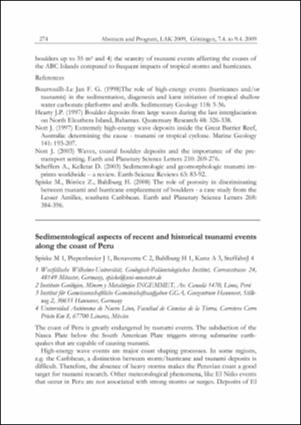Please use this identifier to cite or link to this item:
https://hdl.handle.net/20.500.12544/1925Files in This Item:
| File | Description | Size | Format | |
|---|---|---|---|---|
| Spiske-Sedimentological_aspects_of_recent_and_historical_tsunami.pdf | Artículo de congreso | 126.04 kB | Adobe PDF | View/Open |
This item is licensed under a Creative Commons License












